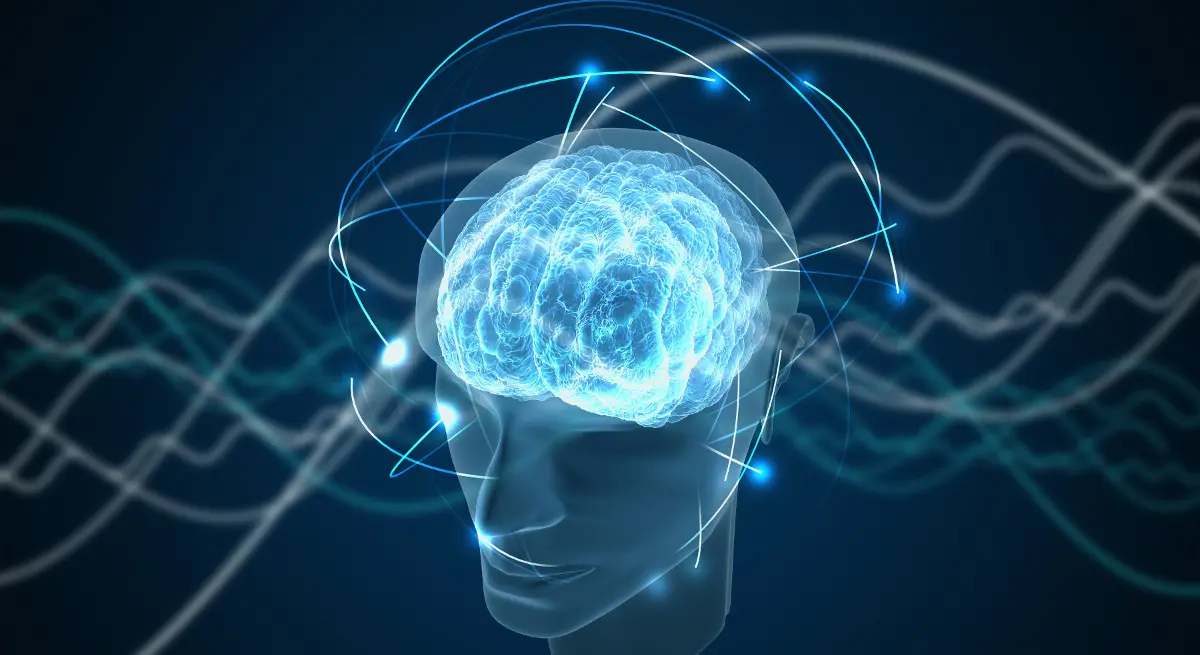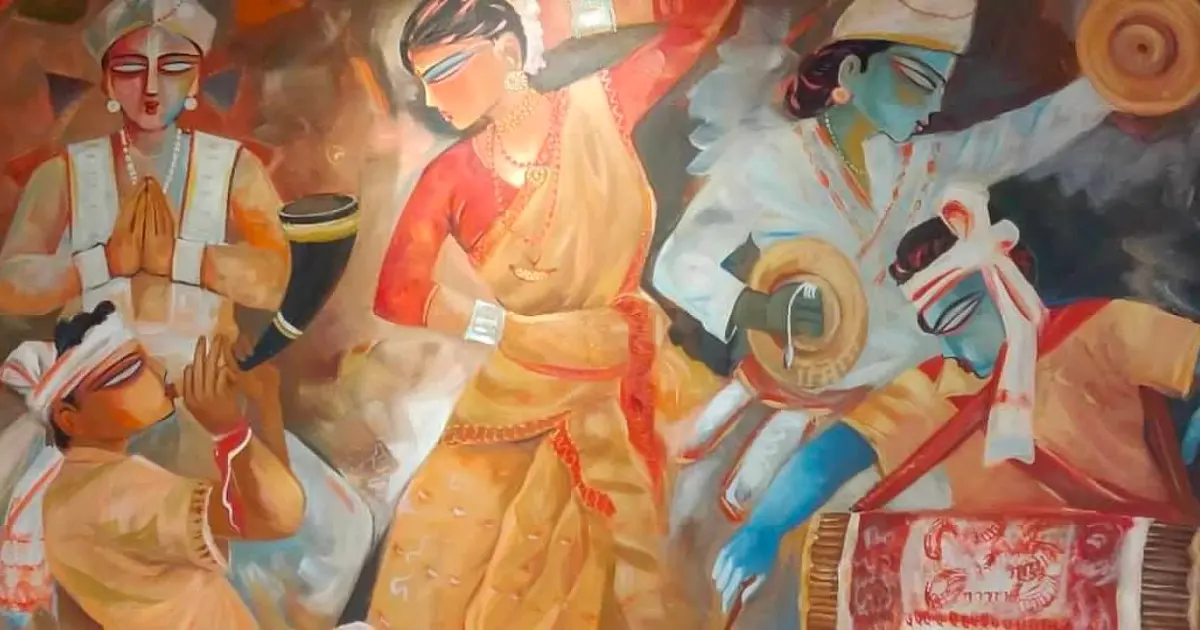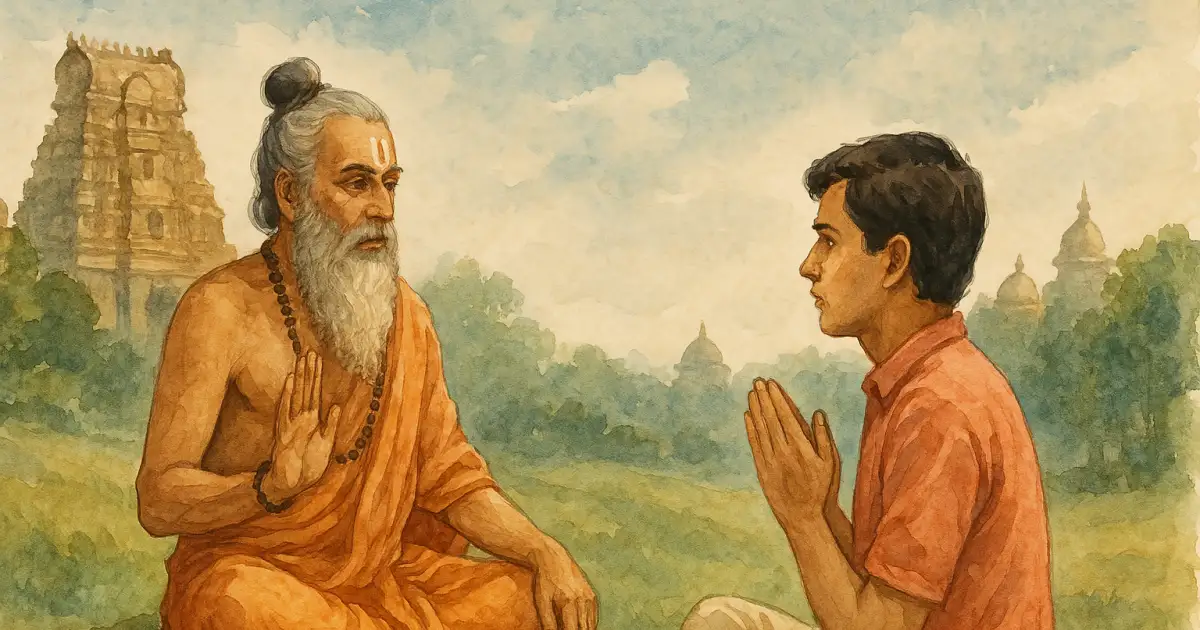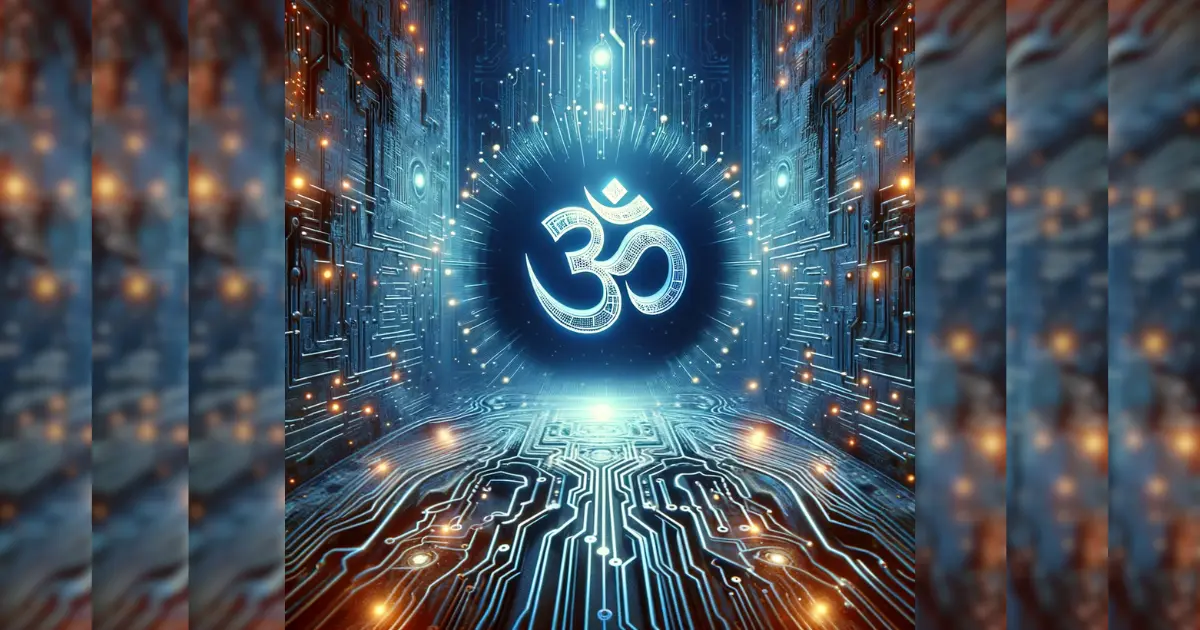The Frame for Discussion
Much has been written about the insurmountable challenges that the tide of modernity has brought along. Today we stand at a perpetual state where both the collective and the individual are on the verge of a breakdown. Leaders in public policy call this a multi-crisis where the individual is facing an endemic of loneliness and emptiness which is in turn fuelled by a culture of constant need for stimulation, a moral sanctioning of indulgence and a complete disregard for the macro-cosmos within which we are situated.
Be it poverty, environmental crisis or an imposition of alien narratives, there are a set of structures that place human desire and will above all else and seek to displace the human mind from the tradition and cultural context that provides it the stability and freedom that it seeks. Most of us are living in an autopilot mode of mindless consumption.
As we continue to seek newer, sustainable ways of relating to ourselves and the world, even as globalization and rapid developments in artificial intelligence continue to hijack our attention spans and intellectual abilities, we must also realize that we cannot wish any of this away.
We can examine yet another shift happening simultaneously across the globe. A rising movement towards solutions of ‘yoga’, ‘mindfulness’, ‘meditation’, etc based in the knowledge systems of the East, and more specifically, Bhārata. While this may feel like a welcome change, it is not the entire truth. The Yogic tradition for instance is anchored in an entire metaphysics of Sāṃkhyan thought and has the goal of samādhi at its core. When viewed from an alien perspective, there is an utter and total distortion of the purpose of yoga itself.
The Western civilization is limited to the realms of the body and mind by virtue of the metaphysics it draws its views from. Therefore, Indic or Hindu systems of knowledge when assimilated or ‘digested’ into Western worldviews, are shred of their profundity and sacredness which defeats the very purpose of their existence. In such a scenario, what are the possible solutions we must look at? The intent of this article is to spawn a discussion in two directions:
- The need for a conscious shift away from the adoption of a foreign lens to look at our relationship with ourselves, the world, nature and Reality; and move towards accepting and re-cognizing the indigenous worldview that belongs to Bhāratavarṣa.
- The criticality of retaining and reclaiming the essence of Indian civilizational thought and why it is pregnant with solutions to challenging global concerns.
With that, let us begin with an examination of our perception of the world.
Perception - Making Sense of the World
Every moment, we are being bombarded with stimuli of all kinds - visual, auditory, tactile and so on. There are objects that have many characteristics such as shape, texture, size, distance, dimensions, etc. But do we absorb everything or is our attention selective? Why do we choose to perceive a particular piece of information over another? The answer lies in the triad of sensation-perception-cognition.
Contemporary psychology defines sensation as the detection of external stimuli through sensory organs and the transmission of this information to the brain through neural impulses, while perception is defined as a meaning-making process of processing, organizing and interpreting sensory data (Pandit, 2022). Sensory input is raw, but is an active, dynamic process involving selection, organization and interpretation of such input, often informed by our experiences of the world (Baron & Mishra, 2016). Cognition will be examined in the next section.
Multiple psychologists have studied perceptual processes as a phenomenon for survival and adaptation in a complex and ever-changing environment. Each study concludes with its own understanding of how and why we perceive. Mostly, there is an agreement that perception happens in two ways - bottom-up and top-down.
In bottom-up processing, the brain is purely dependent on the sensory data it receives and systematically processes the characteristics of the stimuli. It is more analytical and takes reality as it is, into account. Top-down processing, on the other hand, is experience-guided. We react and respond to situations based on what we have learnt and encountered in the past. Most of the time, we engage in both types of processing quite dynamically to cope with the demands of life (Pandit, 2022, pg 93). On the other hand, Gestalt principles of perception show how our brain is wired to perceive shapes and patterns from incomplete and fragmented stimuli based on learning and experiences from the past.
These principles tell us that we have an innate tendency to look at things as a whole and to stitch together stories from individual units of data.This is significant because perception and meaning-making are influenced by the cultural context within which we are situated. Cultural experiences shape the stories we tell ourselves. As Pandit (2022) puts it, different cultures may have foregrounded and backgrounded different sensations.
For instance, Indian culture has developed as a civilization that pays greater attention to the larger, holistic picture while the West focuses on objects in isolation (Nisbett & Miyamoto, 2005). Nisbett’s theory suggests that Western culture incentivizes individual thinking while Indian/Asian culture places the collective above the individual. However, Indian culture envisions to also balance the collective and the individual effectively.
Another study by D.Sinha and R.C. Mishra (1997,2000) points out how two groups, one living in forests and villages and the other living in urban cities, perceived a set of pictorial representations differently based on their own cultural experiences.
In the Western worldview, perception is given utmost importance. Cognitive neuroscience and consciousness studies in the West are only beginning to touch a fraction of what lies beyond sensory perception. In the Indic worldview however, the Naiyāyikas have specifically focused on sensory perception and the fine qualities of sensations from thousands of years ago, confirming that sensation is quite real in its own context and right (Pandit, 2022, pg 104). Not only have the dārśanikās explored the finest of sensations but also moved beyond to enter the extra-sensory realms.
Perception is context-sensitive, rich and nuanced in Indian culture. Our ability to navigate complexity comfortably and retain an understanding of multiple layers of any given domain owes itself to an ancient, unbroken cultural tradition.
In the Indic worldview, specific types of pramāṇas outline the various means of valid perception. We also focus on the idea of perceptual error (bhrama). The process of refining our subjectivity through continuous sādhanā helps eliminate perceptual errors over a period of time. It forms an important part of enhancing how we interact with ourselves and the world, therefore becoming a central construct to the Hindu worldview.
Cognition & Cognitive Shifts - Understanding and Changing the Ways We Think
Cognition can be understood as a broader term and a complex process involving various aspects such as perception, reasoning, decision-making, memory, problem-solving and other higher order mental processes. Language particularly forms a crucial part of cognition. We think and reason because we have a language in which to do so, and we also share our cognition with others through the same. (Baron & Mishra, 2016, pg 234-240).
Language not only allows for higher order cognition, but it is also the fundamental block of any living civilization. Some questions to think about - in which language does one think? How does one talk to oneself? How does language shape the way one responds to life situations?
Language, as a function of culture, helps us co-create meaning together. That does not mean to say that language is the only way to cognize. Visual and auditory imagery, such as images and musical tunes are equally essential in augmenting learning processes. Indian culture especially is rich, refined and sensually diverse in all areas - linguistic, visual and auditory learning processes (Pandit, 2022, pg 104).
Going back to cognition as a broader idea, the way we cognize the world, approach problems, make decisions, etc, is profoundly impacted by what we learn and what has been handed down to us by generations before us. As the field of hermeneutics suggests, ‘there is no understanding without pre-understanding” (Rao & Paranjpe, 2016).
We develop concepts, categories and representations of the processes and structures of the world based on what we learn and how we experience the world, both internally and externally. This makes up what we call “knowledge”. Knowledge is an amalgamation of continuously evolving experiences and ideas of conceptual structures (Pandit, 2022, pg 147-148).
Piaget, a well-known cognitive psychologist, states that our ways of knowing are constantly evolving through our lives. Moreover, we tend to develop cognitive structures or schemas based on views and concepts with which we strongly align or have coherent experience (Rao & Paranjpe, 2016).
The conceptual architecture of each knowledge system is shaped by the quest of the context it develops in. For example, Yoga as a knowledge system arose from experiential and metaphysical yearnings and embodied experiences of the ṛṣis. If we try to decouple knowledge from the cultural context it rises in, we consciously or unconsciously tamper with deeper, layered meaning that it has carried forth comprehensively for generations. We then find ourselves in a state of cognitive dissonance, trying hard to make sense of what is being taught versus the lived reality, as is the case with most of us today.
To further elaborate, cognitive processes do not operate in a vacuum. They are attached to emotions and actions, the personal goals and inquiries of the individual, their values and their context. It is therefore essential to take into account the individual as well as their context as a whole, when we are trying to solve problems or address underlying cognitive errors and maladaptive patterns.
At this point we must remind ourselves that lifestyle can make us prone to cognitive errors and distortions. While culturally, we are taught certain patterns to adapt and even excel, certain life experiences may cause us to enter into maladaptive ways of thinking and functioning. How can we re-pattern, then? The Dhārmika tradition provides us with adaptive mechanisms to re-cognize the world and re-view our interactions with ourselves and others.
An example of this is the idea of vrata, i.e. fast, abstinence or an intentional cessation of any regular action. When we observe a vrata, we encourage ourselves to take a break from specific activities in mundane life where our energies leak the most, be it at the physical level of the body or mental level with thoughts. We are then encouraged to invest that time in conscious reflection and a refocusing of cognitive resources.
Today, however due to present lifestyles and world order, our senses are being hijacked and subjected to a constant flow of information. Our attention is no longer ours. This puts us at loggerheads with the natural order of things. Moreover, one cannot be content with the superficial for long.
At this stage, we posit that dhārmika cultural and wisdom traditions have sustainable solutions to the fundamental upheavals we are facing as a society today. What we need is not another upheaval, but a transformative cognitive shift or a cognitive reappraisal.
Cognitive shift, also known as a paradigm shift or a cognitive restructuring, refers to a significant change in an individual's underlying beliefs, perspectives, or ways of thinking. Cognitive shifts occur in the following scenarios:
- Due to a discomfort experienced between the current cognitive framework and a substantial amount of challenging evidence from alternative perspectives and frameworks.
- Exposure to alternative ideas and cultural contexts which highlight limitations and biases in present ways of thinking.
- Deeply emotional and personal or lived experiences can disrupt existing frameworks, generate an existential cognitive dissonance and prompt people to evaluate and adopt sustainable alternatives.
- Constructive debates, social dialogues and reflective discussions.
A part of us is also awakening to the reality that there is a chasm between what has percolated into our educational and political institutions and what has authentically developed as an integral part of the Indian or the Bhāratīya civilization.
In the coming sections we examine the present view of reality we subscribe to as a community; how the underlying, deeper, contrasting civilizational structures lie in dormancy; and the growing need to rediscover a metaphysics, a worldview that is time-tested, indigenous and still very much alive.
The Western Ontological View of Reality
The Western understanding of reality is shaped by the religious, philosophical and scientific traditions of the Western civilization. It reflects the conflicts the West has undergone as a society, in terms of science and religion and their perspectives on nature, knowledge and humanity. It is imperative that examine the Western views of reality because post-colonial education, political philosophy and even psychology as a discipline in India draw from these traditions, further alienating us as Bhāratīyas from our own worldviews and traditions by placing a relatively contrasting system of knowledge at the center of national governance.
According to the Western worldview, reality is nothing but matter in motion. Rene Descartes’s theory posits a fundamental dualism between the mind and the body, which posits that mind and consciousness are derivatives of the physical processes of the brain. It is anthropocentric, in that it places man at the center and topmost level of creation. This idea encourages the intent to master and eventually exploit natural forces for the benefit of mankind.
Western understanding of reality is built upon the Enlightenment metaphysics which emerged as a movement in the 17th and 18th centuries, as a challenge to pre-existing religious doctrines. Enlightenment metaphysics favored rationality, empiricism and scientific inquiry, advocating the removal of theological influences and a separation between the church and the state. Ironically, however, certain theological views continue to underpin the collective endeavors of the West even today, man’s exploitations and a complete dominion over nature being one of those.
The principles of Western metaphysics adopt a materialistic stance where the physical world is the ultimate reality and it can be understood in units of material interactions. It emphasizes on the study of nature and human behavior through empirical observation and inquiry, and discards any notion of supernatural or altered states of consciousness and the idea of a Reality beyond the physical. There is no awareness or possibility of the existence of a subtle world, as in Indic thought. Time in this civilization is linear, it is a direct shot from the past to the future which in turn encourages structures that facilitate a culture of constant accomplishments and economic/technological advancements to be achieved in this very lifetime at the cost of everything else.
The West foregrounds meaning-making based purely on human rationality and reasoning, stating that true knowledge can be attained through logical deductions and observations rather than through metaphysical practices. Because it places the human being at the center, the worldview is individualistic and emphasizes notions of independence, uniqueness, identity, self-goals, indulgence as a means for securing fulfillment. We see this in the undeterred development of technology and AI which are double-edged swords, allowing for both efficiency and mass destruction.
Nisbett et al. (2001) have noted that Western and Asian cultures differ in the ways they think. The two approaches include profoundly different social relations, views about the nature of the world and characteristic thought processes. Western thought is analytic and focuses on objects and their attributes, uses universal laws that are deterministic and linear, and implies formal logic to examine happenings around us.
It subscribes to the idea of secularism where societal progress should be based on reasoning, ethics, and individual rights and liberties rather than theological doctrines. It has only recently been accepted that we are also emotional beings with subjects such as behavioral economics and advanced neurosciences coming into existence.
The Western culture places an emphasis upon the external world for the fulfillment of human desires as opposed to the Asian or Indian view where the idea of fulfillment is internal. While Western civilization itself is a recent phenomenon, its ideas and products have become pervasive.Western culture has imposed itself upon societies which are innately self-sustaining, holistic and collectivistic, destroying the mental and social fabric of such societies eventually.
Today, we are victims of the era of social and digital media, where our attention-span and ability to experience pleasure is in submission to a select number of technocrats who control global narratives and designs. They pander to individual whims and instant gratification, and constantly create personalized products, feeding into a cycle of rampant consumerism.
Indic thought provides an enduring worldview that challenges us to evaluate this existing system, while offering a sustainable solution to the global crisis. It is time we look inwards, towards the land of Bhāratavarṣa. It is time we look inwards, towards the land of Bhāratavarṣa.
References
Baron, R. A., & Mishra, G. (2016). Psychology - Indian Subcontinent Edition (5th ed.). Pearson.
Deshpande, M. (1979). History, change, and permanence: A classical Indian perspective. In G. Krishna (Ed.), Contributions to South Asian studies 1 (pp. 1–28). Delhi: Oxford University Press
Mishra, R. C. (1997). Cognition and cognitive development. In J. W. Berry, P. R. Dasen, & T. S. Saraswathi (Eds.), Handbook of cross-cultural psychology, Vol. 2: Basic processes and human development (pp. 147–179). Boston: Allyn & Bacon.
Mishra, R. C. (2000). Perceptual, learning and memory processes. In J. Pandey (Ed.), Psychology in India revisited – Developments in the discipline, Vol. 1: Physiological foundations and human cognition (pp. 94–150). New Delhi: Sage.
Nisbett, R. E., Peng, K., Choi, I., & Norenzayan, A. (2001). Culture and systems of thought: Holistic vs. analytic cognition. Psychological Review, 108, 291–310.
Nisbett, R. S., & Miyamoto, Y. (2005). The influence of culture: holistic versus analytic perception. TRENDS in Cognitive Sciences, 9, 467–473.
Pandit, S. A. (2022). Introduction to Psychology. SAGE Publications.
Rao, K.R., & Paranjpe, A. C. (2016). Psychology in the Indian Tradition. Springer.
Triandis, H. C. (1990). Cross-cultural studies of individualism and collectivism. In J. J. Berman (Ed.), Nebraska symposium on motivation, 1989 (pp. 41–133). Lincoln: University of Nebraska Press





